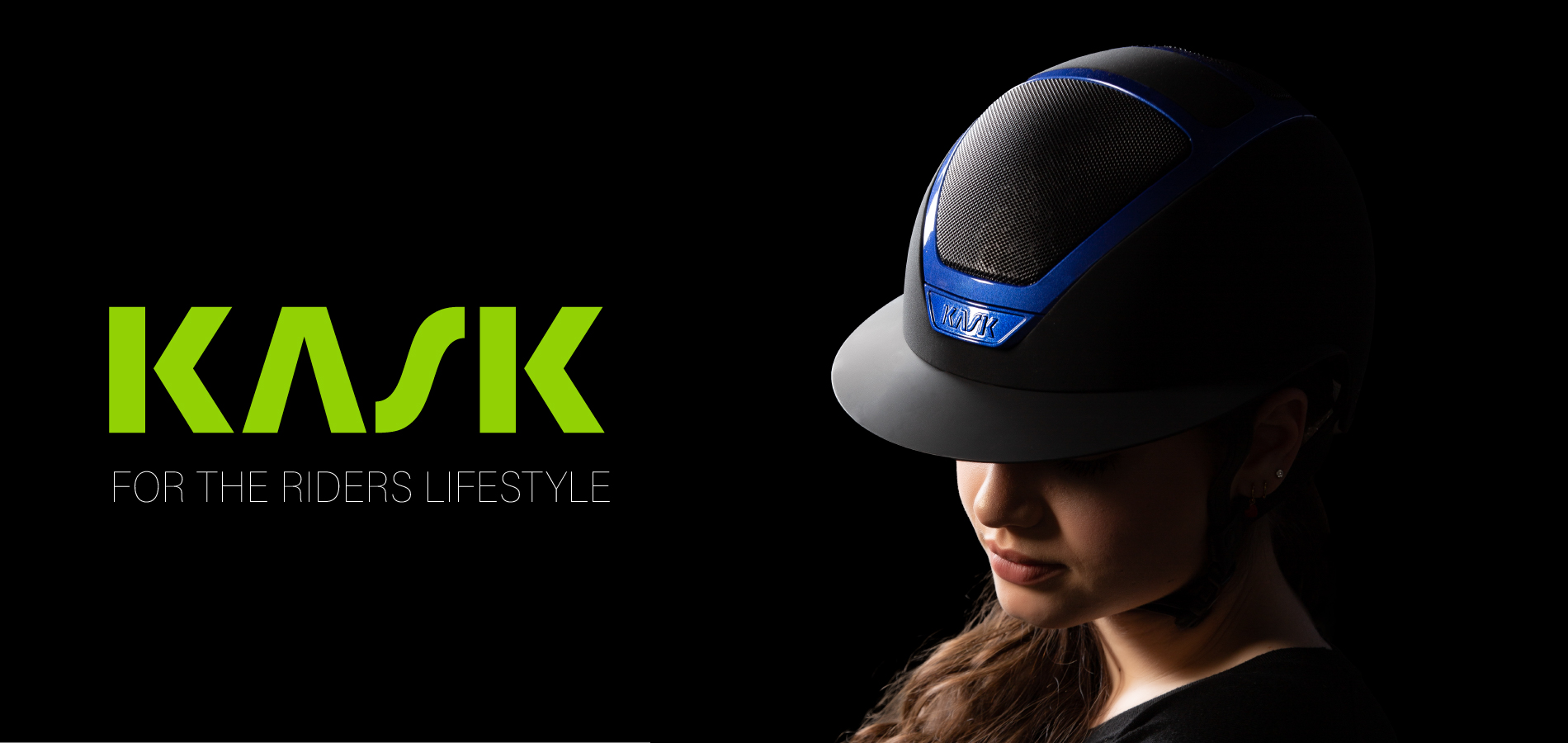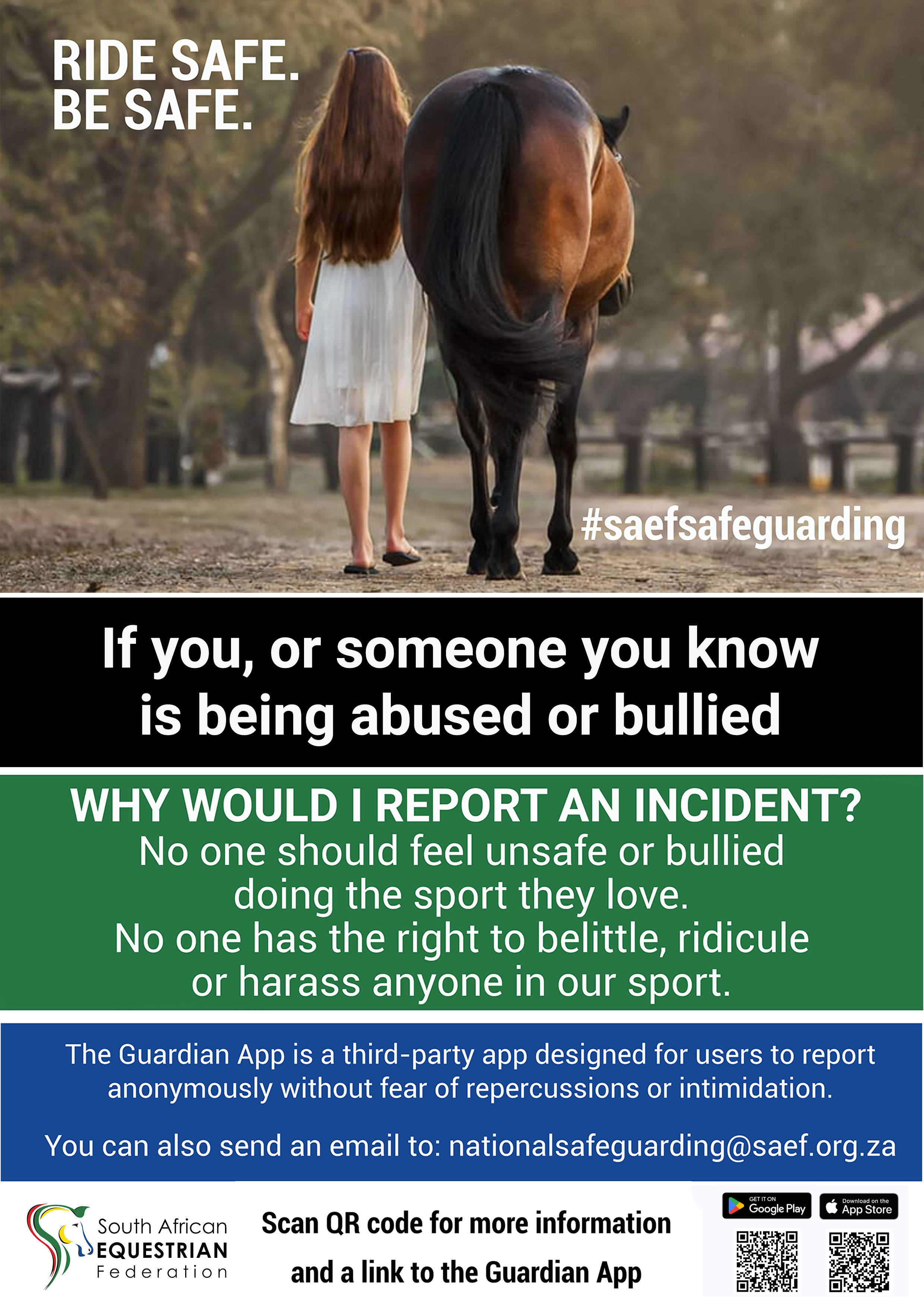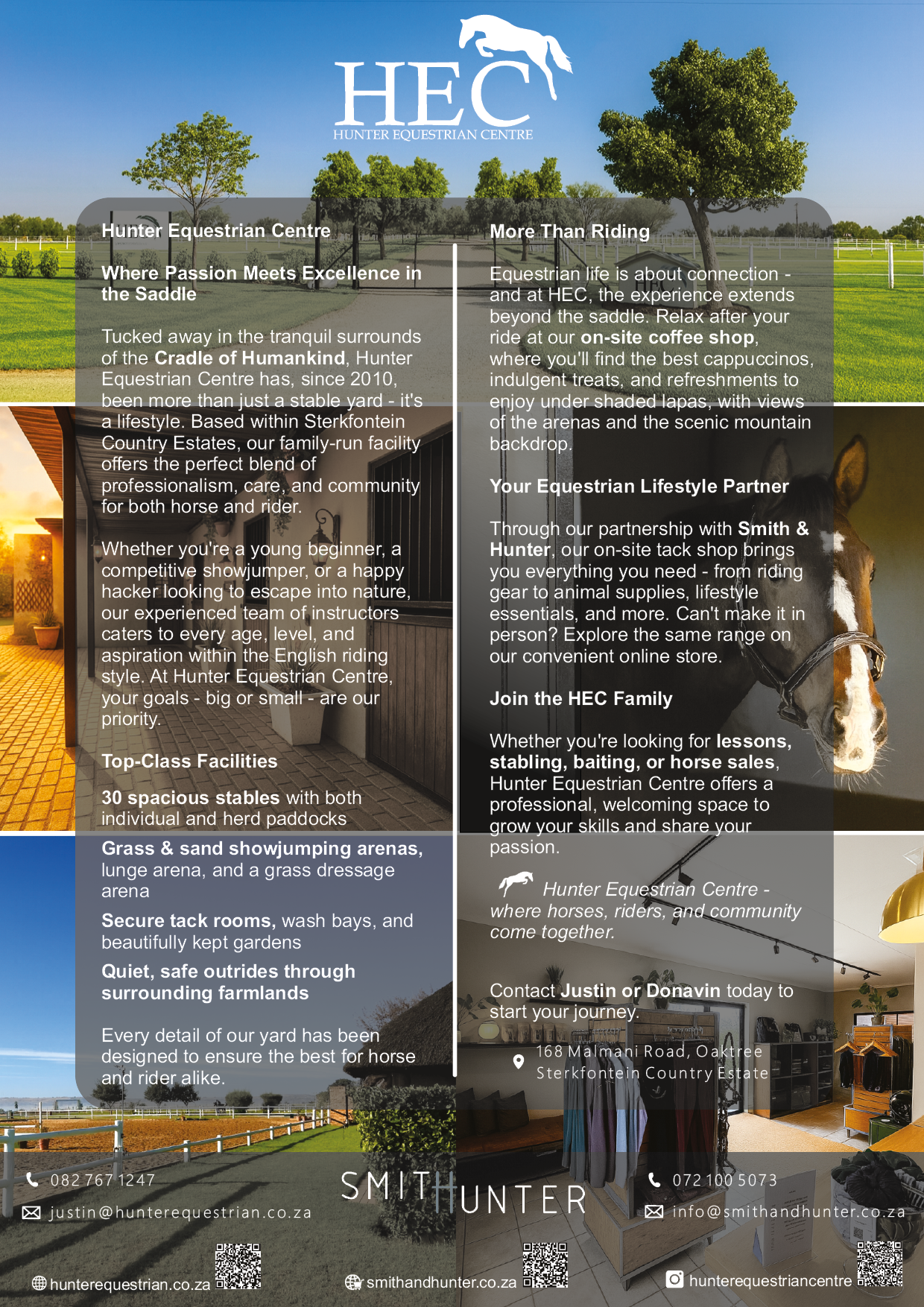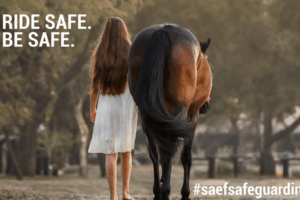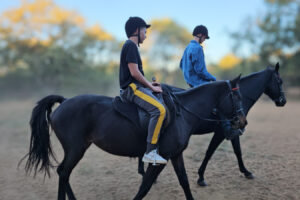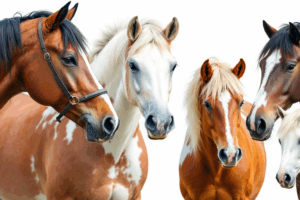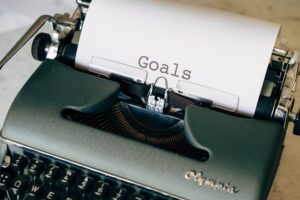There is a fair amount of frustration entering a show, thinking you have done everything correctly, only to find you have no idea what the judge is looking for. While there are most definitely a host of dos and don’ts for disciplines like Showing and Equitation, many of the same principles apply in the Dressage ring and even for competitive Showjumpers.
When it comes to judging in the equestrian arena, few have the breadth of experience or the eye for detail that Greg Goss brings to the arena. From his early days as a Pony Club member to judging across Africa, Australia, New Zealand and the United Kingdom, including no less than twice at the prestigious Royal Windsor Horse Show, Greg’s career spans decades of dedication to horse welfare and rider excellence.
We sat down with Greg to uncover his invaluable insights for competitors at every level and across disciplines.
First Impressions Matter
Greg is quick to emphasise the importance of a strong first impression. “No matter what the discipline, when a rider enters the ring, the first thing I notice is turnout. Both horse and rider need to be immaculate. This means a clean, well-groomed horse and a rider who looks professional. Safety equipment, like properly fitted helmets and clean boots, is non-negotiable.”
But it’s not just about appearance. “The horse’s condition and welfare are paramount. A happy, healthy horse is immediately noticeable. As a judge, I can’t overlook these things. Sure, it starts with a clean horse. From there, everything must be in order—correctly sized plaits, a tidy tail, and no bedding stuck in their coat. These seem like little things, but they make a big impression.”
“Poor turnout shows a lack of respect for the sport and the judges. And by this, I mean turnout of the horse and rider.”
Beyond First Impressions
While first impressions set the stage, Greg explains that judging goes far deeper. “Once the rider has entered the arena and the initial impression has been made, I start looking at the overall picture. In a Showing class, for example, I’m judging the quality of the horse or pony, how well it moves, and how well it has been schooled. Soundness is paramount across all disciplines. If I notice a horse that is unsound, even in the warm-up arena, it’s my duty to point it out.”
Greg’s evaluation doesn’t stop at physical attributes. “The way a horse accepts its rider’s aids and their harmony is critical. Are they working in unison? Is the horse on the bit, responsive, and happy? A horse that enjoys its work is not only more likely to perform better but also creates a picture that every judge wants to see.”
Rider Adaptability
He also appreciates resilience and adaptability, which can be seen in the Equitation ring. “Occasionally, you’ll see a horse act up, it might be green or fresh off the track. How the rider handles that behaviour is telling. In equitation, for example, we’re not just looking at the horse’s behaviour but also at how the rider manages it. A skilled rider can bring a horse back and stay composed under pressure.”
He adds: “When riders switch mounts, the difference in skill levels becomes clear. A good rider can coax a better performance out of a horse they’ve just met, while the truly brilliant ones can unlock potential the horse’s regular rider didn’t even realise was there. I’ve often heard riders say, ‘I didn’t know my horse could go like that’.”
Happy Horses Perform Better
This also leads to a consistent theme in Greg’s advice, which is the welfare of the horse. “A horse that’s uncomfortable or unhappy won’t perform at its best. Sometimes, it’s due to something as simple as an ill-fitting saddle. I’ve had to point this out to riders – it’s part of my responsibility as a judge.”
Greg is particularly vocal about the impact of a rider’s hands on a horse’s behaviour stating that unforgiving hands can ruin a horse’s confidence. “You’ll see it in their ears, their tension, and their resistance. Welfare is not just about the physical condition; it’s about how the horse feels at work. This has an impact at every level and in every discipline.”
Other areas he is quick to point out include jabbing a horse in the mouth, excessive smacking, bits that are upside down (yes, this is common), and curb chains that are too tight.
Preparation is Everything
For competitors, Greg’s mantra is clear: preparation, preparation, preparation. “Don’t just ride at home,” he advises. “Take your horse to different venues, even a friend’s property, to acclimatise them to new environments. Shows can be overwhelming, with loudspeakers, crowds, and other horses. The more exposure, the better.”
Boxing is another aspect Greg says riders must work on, and he believes that a horse that trucks well is worth double the price. Timing also plays a role. “Arrive at the venue at least three hours early. Let your horse settle, familiarise yourself with the environment, and give yourself time to prepare properly. Rushing only adds stress.”
Tackling Show Day Nerves
Nervous riders are common in competition; almost all of us have been there, regardless of how many years you’ve spent in the saddle – nerves can be debilitating.
“Get there early and take it slow. If you’re nervous, so is your horse. Make sure you’re suitably mounted – pairing a nervous rider with a nervous horse is a recipe for disaster. In years gone by, we rode at agricultural shows where everything happened. If you and your horse can survive the amusement park next to the arena and the 12 o’clock fly by, you can survive anything.”
He also suggests watching other classes to get into the rhythm of the day.
Learning from Different Disciplines
Greg believes in the value of cross-discipline experience. “If you’re bringing up a young horse, try a working riding class or a poles-on-the-ground event. Showing teaches a horse manners and prepares them for future disciplines, whether it’s dressage, showjumping, or eventing.”
The Role of the Judge
Greg’s judging experience spans countries and disciplines, but one principle remains constant: responsibility. “As a judge, the arena is my stage,” he explains. “I am responsible for everything that happens in it – from ensuring welfare standards are met to resolving issues efficiently and fairly. The judge must take control of the environment and ensure that the stage is set for competitors to deliver their best performance.”
He recalls judging at the Royal Windsor Horse Show, where he had the honour of meeting Queen Elizabeth II. “Judging in front of Her Majesty was a career highlight. But it’s the day-to-day impact—helping riders and horses improve that truly matters.”
Drawing on his wealth of experience, Greg proudly highlights that South African riders and horses are more than capable of competing on the international stage, matching global standards in quality and skill. He adds that international judges are often astounded by the exceptional riding ability displayed by South African children.
Final Thoughts
Greg’s parting advice to competitors is simple yet profound. “Respect the sport, respect your horse, and always strive to improve. Even after decades, I’m still learning. Horses have a way of humbling you and teaching you something new every day.”
With his wealth of knowledge and unwavering commitment to equestrian excellence, Greg Goss continues to set the standard for what it means to be a top competition judge.



